Solar Simulation Products
Pico™ Small Area LED Solar Simulator
Software Control from AM0 to AM1.5G and Beyond for Big Results.
Solar Simulation Products
Software Control from AM0 to AM1.5G and Beyond for Big Results.
Our LED Solar Simulators Are Trusted By









Your days are spent changing the world. One paper, one invention, or one idea at a time. You invest all of this effort into making a difference for everyone else, yet when it comes to your solar simulator it seems as though development has stagnated.
Your time is spent tinkering with expensive filters, replacing what seems like endless bulbs, and calibrating over and over just for peace of mind that your results are sound. Time spent daily, weekly, and monthly on tasks that never seem to be resolved in the next model.
What if these traditional barriers were no longer an issue?
Better yet, what if you could switch from AM1.5 to AM0 spectrum and not worry about these archaic practices?
Meaning no wasted space shelving expensive filters, no worrying about dimming bulbs, and no manual recalibration. You can get back to what matters, changing the world.
Welcome to a AAA solar simulator finally being on par with your forward thinking.


Your research is taking you on another scientific adventure. Your existing solar simulator should be able to make the journey.
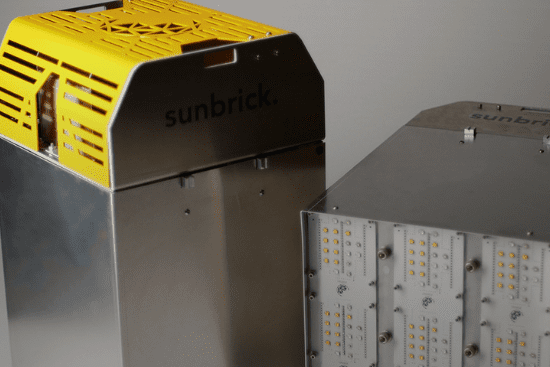
Never choose between spectral match, uniformity, and long or short temporal instability again. With a compact footprint, you won’t be sacrificing quality in order to free up workspace. Finally, you will be able to take solace in knowing the precision, accuracy, and repeatability of AAA solar simulation found in the G2V Pico™ is backing your findings.
The Pico’s AM1.5G spectral match exceeds the ASTM E927 and IEC 60904-9 standards and Class A requirements by 5x.
Accurate light for advancing your applications.

Our Sunbrick starts at 15 cm x 15 cm and can scale to any size.
Don’t forfeit precise and accurate light for size or scaling ever again.
Your research is taking you on another scientific adventure. Your existing solar simulator should be able to make the journey.
The Variable Spectra module unlocks full spectral control with software-controlled intensity manipulation. This upgrade enables control of up to 32 tunable channels depending on your model to replicate virtually any solar condition.
Includes spectral presets for AM1.5G and AM0 to AM40, for intensities from 0 to 1.1 suns.
Test your applications as if they were anywhere in the world, during any season, and at any time of the day with the power of One Click Sun.
Our software is crafted to be simple, accurate and easily configurable. Test with added confidence without needing to fly around the world.
Need to have it cycle through the days faster? It does this as well.
Integrated data collection hardware and software for PV Power Conversion Efficiency (PCE) measurements.
The IV module will measure the performance of a solar cell and generate a characterization report with all electrical characteristics – following the ASTM E1021 standard test method.
Integrated data collection hardware and software for low-resolution EQE measurement
The Low-Resolution EQE module provides wavelength-resolved measurements of your photovoltaic device’s external quantum efficiency (EQE) under operational conditions without needing finicky set-ups requiring monochromators or external bias lighting, saving you time when you only need a quick check instead of high-resolution data.

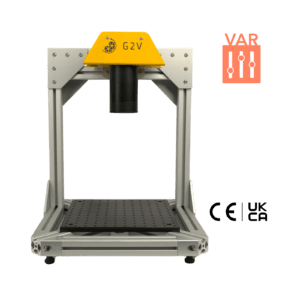
Our entry level Pico package is suited for researchers who need tunable light without the need of integrated SMU capabilities.
Here is what the Pico Tunable Lite Package includes:
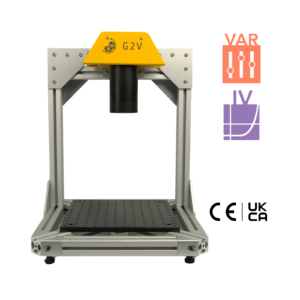
This Pico package is suited for experts requiring an integrated SMU to capture data about their photovoltaic cells on one device.
Here is what the Pico IV Characterization Package includes:
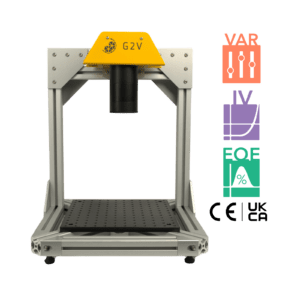
This Pico package is designed for those who require tunability, IV, and low-resolution EQE for a quick snapshot.
Here is what the Pico Advanced Characterization Package includes:
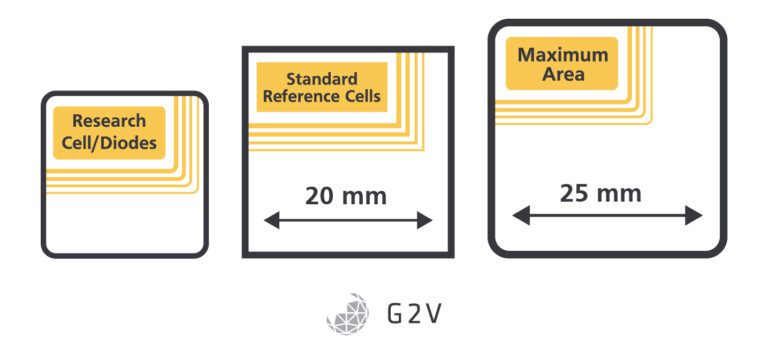
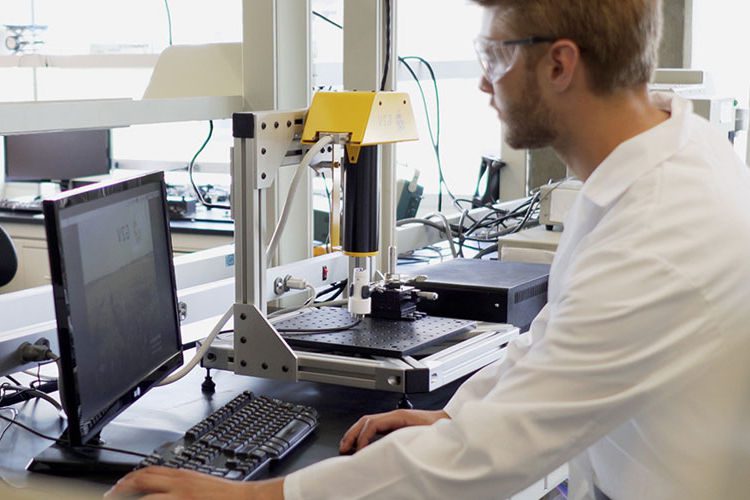
Your research matters. You can’t afford imprecise light that gives inaccurate results.
The G2V Pico™ is a research-grade instrument suitable for testing any photosensitive materials or processes, including solar cells, sunscreen, plastics, photochromic devices, photochemical processes, environmental degradation, aerospace materials, and more.
Your Class AAA solar simulator should be flexible to ensure your results are accurate and valid, wherever your research takes you. This is why the Pico™ allows you to choose a spectral range, the ability to upgrade to completely control spectrum & intensity all the way to measuring photovoltaic IV characteristics and even adding the ability to obtain low-resolution EQE measurements.
Customization To Futureproof Your Ongoing Needs
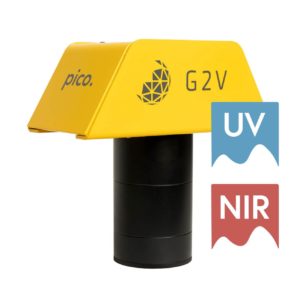
The Pico is a Class AAA solar simulator for experts requiring an extended wavelength range to 1500 nm and a small area illumination. Widely used by specialists in aerospace, material sciences, photochemistry, photovoltaics field and more!
Here is a high level view of the Pico specs:




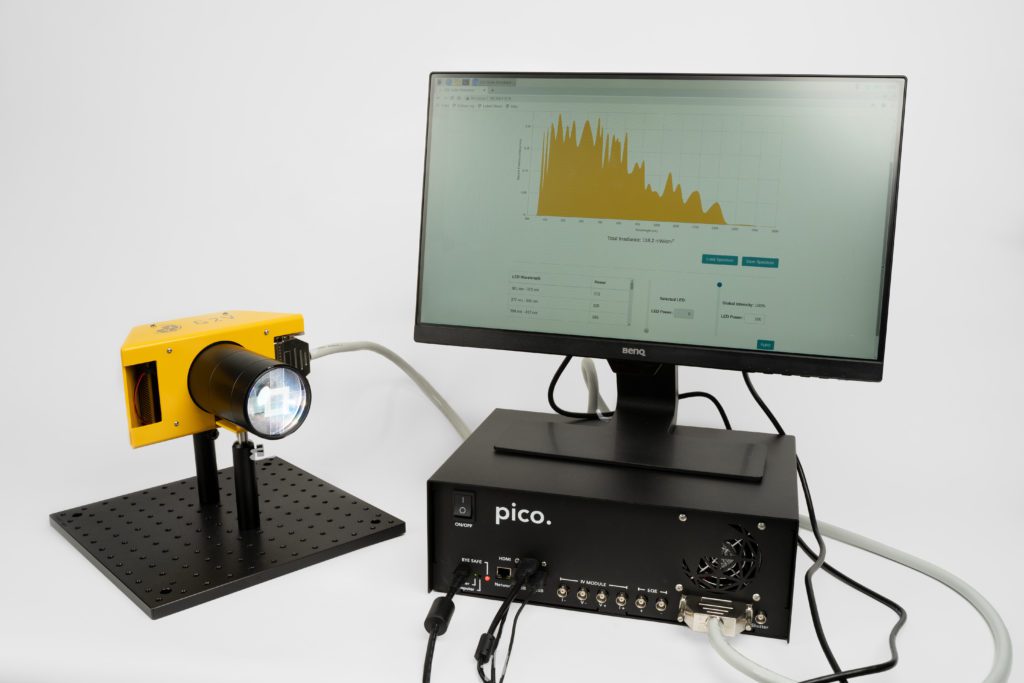
When it comes to illuminating the dark areas of scientific discovery you need to verify every technical specification of the tool. Not an easy task, but a necessary one. Having come from the scientific field we get it.
That’s why we have a brochure and spec sheet for you to download and explore at your leisure. It has all the latest information to allow you to make an informed decision before committing any amount of your budget.
Pico FAQs
With the variable spectrum add-on for the Pico, you gain the ability to individually adjust up to 32 LED channels (depending on the model). The spectral width of each LED varies, but a general rule of thumb is that the bandwidth is 10% of the peak wavelength in nm. For example, an LED with a peak at 400 nm has an approximate bandwidth of 40 nm, while a 1000 nm LED has an approximate bandwidth of 100 nm. Depending on your application, this LED bandwidth may be suitably monochromatic for testing specific wavelength dependencies.
I saw that the pictures on the official website are illuminated vertically. However, we need a light source in the horizontal direction.
The Pico comes with either an imperial or metric mounting plate, specified upon ordering, which allow for horizontal mounting. The imperial plate provides two ¼”-20 threaded holes separated by 4”, suitable for mounting to standard ½” optical posts and imperial optomechanical breadboards. The metric plate provides two M6 threaded holes separated by 100 mm, suitable for mounting to 12 mm optical posts and metric optomechanical breadboards. Be sure to specify your preferred configuration when ordering.
Any of the Pico models with “UV” in their name contain light from 350 nm to 400 nm. The advantage of this wavelength range is that it does not produce ozone; however, if you require UV light below 350 nm, we do not currently offer that in any of our products. If wavelengths below 350 nm are of interest to you, please let us know so we can prioritize in our ongoing product development roadmap.
There is a Python API for controlling the Pico through Python scripting, which allows for automation. The API provides the ability to turn channels on and off, load spectra, and more, without the need to use G2V’s graphical interface. For more detailed information and examples of methods and properties, visit the Python API’s repository on Github.
G2V Optics’ solar simulators are suitable for testing the following solar cell technologies: crystalline silicon, amorphous silicon, perovskite, multijunction, tandem, gallium arsenide (GaAs), cadmium telluride (CdTe), dye-sensitized solar cells (DSSCs), organic photovoltaics (OPV), inorganic solar cells, quantum dots, copper-indium gallium selenide (CIGS), thin-film solar cells based on kusachiite (CuBi2O4), and most other thin-film, multicrystalline, concentrator and/or heterostructure solar cells.
The Pico can be used for testing multijunction devices, however, accurate testing requires proper validation for that specific design of the multijunction device. G2V is currently unable to validate the Pico for out-of-the-box performance and calibrated output for use with multijunction-based solar devices due to the lack of standardization among formulations and designs of these devices. Different junction designs will sample different portions of the solar spectrum as well as have their own spectral responsivities, potentially resulting in spatial non-uniformity and spectral mismatch characterization outside of the Class A standards for those junctions and spectral responsivities.
Thus G2V recommends that customers working with multijunction cells perform their own validation on-site in order to ensure their G2V product is performing to the customers’ desired standards for specific junctions.
If you are willing to submit a sample of your device that you are wanting to be tested prior to the purchase of a Pico, it is possible for G2V to calibrate a unit for that device for an extra fee.

Knowledge Base
We ensure our customers have access to resources that help them understand applications, standards, and how our products exceed them. Visit the knowledge base to learn more about Aerospace Materials Testing, Custom Solutions, Photovoltaics and much more.
Solar Simulator Prices – How Much Should a Solar Simulator Cost? This article gives an overview of the necessary considerations when pricing and comparing solar simulators, and provides specific examples of the impact of a solar simulator’s quality on research. Additionally, we...
The Sunbrick’s AM1.5G spectral match exceeds the ASTM E927 and IEC 60904-9 standards and Class A requirements by 5x.
Accurate light for advancing your applications.
.Join over 9,000 people who receive our monthly newsletter that contains news updates and access to important resources.